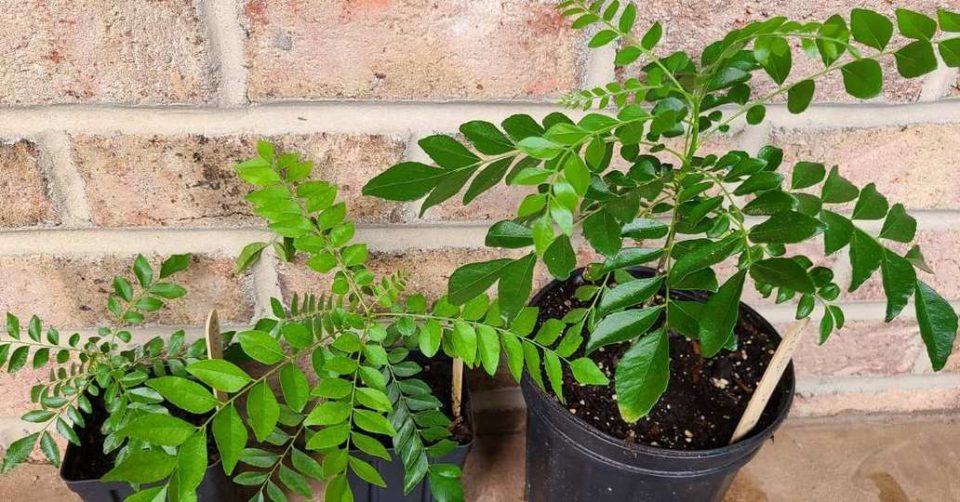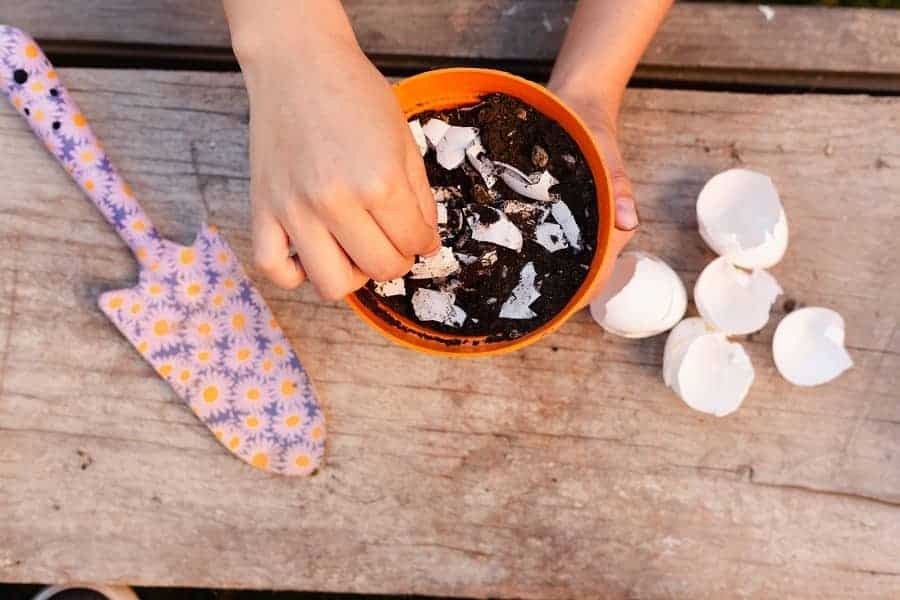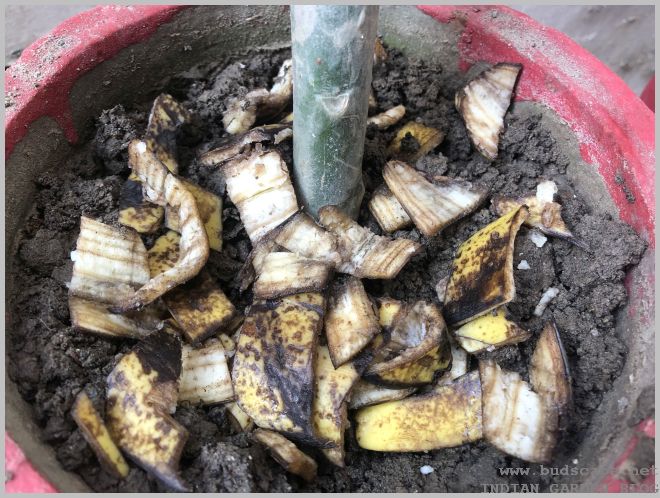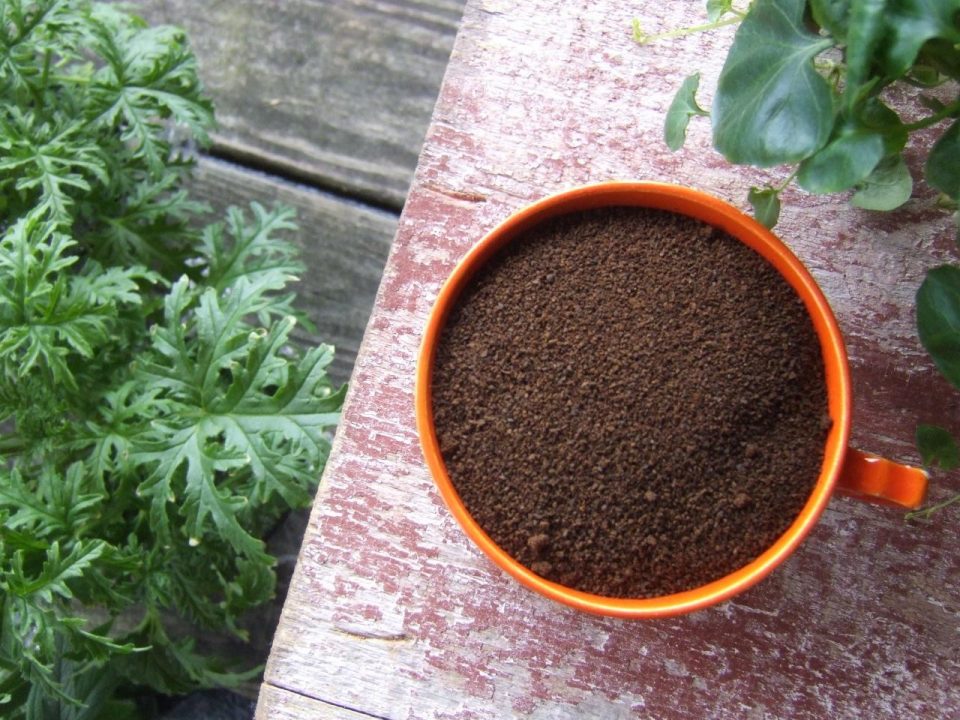Curry leaves plant (Murraya Koenigii) is a tropical plant with aromatic and culinary uses. The plant’s small size makes it suitable for growing in containers indoors or on patios. The spicy, aromatic leaves have been flavoring foods for centuries in Asian cuisines.

Curry leaf trees can be grown from seeds or cuttings. You can also buy one and transplant it into your garden’s soil. Once grown, you will need to take care of your curry leaf tree by watering it regularly and ensuring it gets enough sunlight.
The best potting mix for curry leaf plants is a mixture of sand, peat moss, and perlite. The soil should be kept moist at all times but never allowed to dry out completely. Curry leaf plants can be grown indoors or outdoors but prefer warm temperatures (around 70 degrees Fahrenheit).
To grow curry leaves plant faster, follow these fertilizers:
1. Eggshells
Eggshells make a great addition to your fertilizer because they are rich in calcium, which is important for plant growth. The mineral also keeps the pH of the soil at a level that promotes healthy root development and helps keep it from becoming too acidic or alkaline.

Regarding plants, nitrogen is an essential nutrient that feeds the leaves and stimulates new growth. Eggshells contain over 1% nitrogen by weight, making them a good source of this essential nutrient for your curry leaf plant’s health and growth.
Phosphorus plays an important role in photosynthesis, which means it’s essential for producing energy via sunlight through photosynthesis. Eggshells contain roughly 0.038% phosphorus by weight—just enough to help support healthy cell division without being too much (which could cause damage). In addition to promoting photosynthesis, phosphorus also stimulates root development. We recommend adding eggshells directly into the soil around your pruning curry leaf plant rather than just sprinkling them on top as fertilizer once every one or two months during the growing season.
2. Banana Peels
The peel is also rich in copper and zinc.

The best time to use this fertilizer is during the rainy season when you can add it directly to your curry leaf plant’s soil or potting mix to have a better chance of being absorbed by the roots.
3. Coffee Grounds
Coffee grounds are rich in nitrogen, one of the major nutrients your curry leaf plant needs.
Coffee grounds also have potassium, phosphorus, calcium, magnesium, and sulfur. These elements play a key role in photosynthesis by providing energy for the leaves to produce chlorophyll and release oxygen as a byproduct of photosynthesis.

Because coffee grounds contain micronutrients such as copper and zinc (which are needed for root development), it’s an excellent fertilizer for curry leaf plants that have recently been transplanted into the soil after being grown in containers or raised beds.
4. Grass Clippings
This is the best natural fertilizer for the curry leaf plant. Grass clippings are a rich source of nitrogen and make a marvelous fertilizer for the first few weeks after planting. They can also be used as a mulch around your curry leaf plants, which helps keep soil moisture and weeds out.
5. Manure
Manure can be found easily; it’s easy to use and even easier to dispose of. It’s not expensive, and you can buy it in bulk! Manure is a great fertilizer for curry leaf plant as it is a good source of nitrogen.
So what are the downsides? Manure has a smell that may not be particularly pleasant for your neighbors, but if you take care of this problem by covering it up with soil or mulch, there shouldn’t be any problem!
Also read: Best Trees For Rooftop Garden For All Seasons
6. Tea Leaves
- Please make sure the leaves are dry before using them as fertilizer.
- You can use either green or black tea leaves, but you’ll get better results from green ones. You can also try mixing the two types for an even stronger effect.
- Crush the leaves into small pieces and mix them with your soil or compost when preparing a pot for planting curry leaf plants. Using this method, you won’t have to worry about storing the tea leaves in an airtight container since they’ll already be broken down by the time you’re ready to use them!
7. Horse Manure Tea
- Take 3-4 pounds of dried horse manure and cover it with water in your large bucket or container (the one you plan to use for the tea). You could also choose to use a slow cooker instead of a bucket. If your curry leaf plant black spots on its leaves, it may be a sign that you’re watering too much, too little, or have a fungal infection.
- Put the lid on tight and let it sit for about 24 hours at room temperature, occasionally stirring if possible (though not necessary). It’s okay if some chunks of dried-up poop floating around—the worms will take care of those!
- Strain out the solids using cheesecloth or an old t-shirt and scrape off any remaining chunks with a spoon or spatula (or whatever else you have lying around in your kitchen). The resulting liquid should be dark brownish/greenish but not overpowering smelling because we’ve already strained out the poop bits! This is why this method works well: no bad smells yet still plenty of nutrients left over from those bacteria living within our horse manure, friends 🙂
8. Fish Fertilizer ( If you like the smell, then yes.)
Fish fertilizer is a great way to add nutrients to your soil. It has the advantage of being organic, so it doesn’t burn the roots of plants or cause them to absorb too much nitrogen (which can lead to leaf burn). Fish fertilizer is made from fish waste that has been broken down and dried into granules, pellets, or powder. Fish fertilizer is a good source of nitrogen, phosphorus, and potassium—nutrients that plants need to grow well. If you’re trying out some new gardening techniques at home or looking for an alternative way to feed your curry leaf plant, why not try adding some fish fertilizer?
Final words
So there you have it, the nine homemade fertilizers for your curry leaf plant.
Curry leaf plant care requires proper watering, fertilizer, and sunlight conditions. White spots on curry leaves plant is caused by spider mites which are tiny insects that feed on your plant’s sap. These insects create white specks on the leaves of the curry leaf plant, causing them to look dirty or damaged.
Hence, there are many different things you can use to make fertilizer for your plants that are not only good for them but also better for the environment.
FAQs
Q1. How often should I fertilize my curry leaf plant?
The frequency depends on how fast your plant grows. If you want to increase your curry leaf plant’s growth rate, you need to feed it more often than usual (once every two weeks). But if you want to maintain its current growth rate, then once every month would suffice.
Q2. Can I use both fertilizer and compost together?
You can certainly do so! This combination is an excellent way of providing nutrients for your curry leaf plant without harming its roots or affecting the taste of its leaves.
Q3. What type of soil should I use for growing curry leaves?
Curry leaves can be grown in any soil as long as they are rich in nutrients and have good drainage capacity. If possible, choose an area that receives direct sunlight so your plants will get enough light for growth and development.
